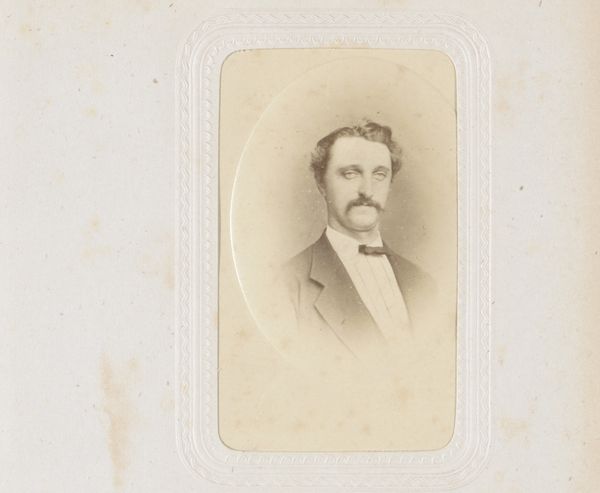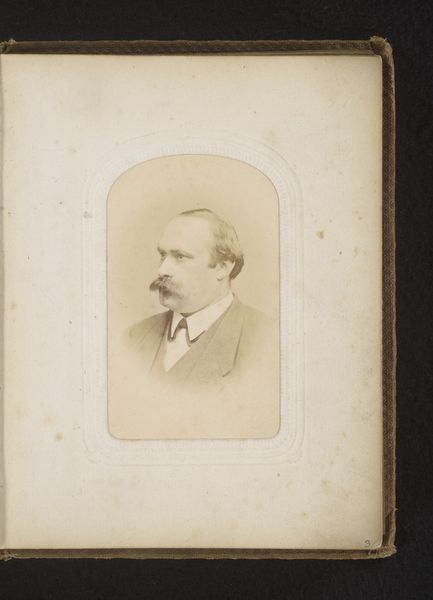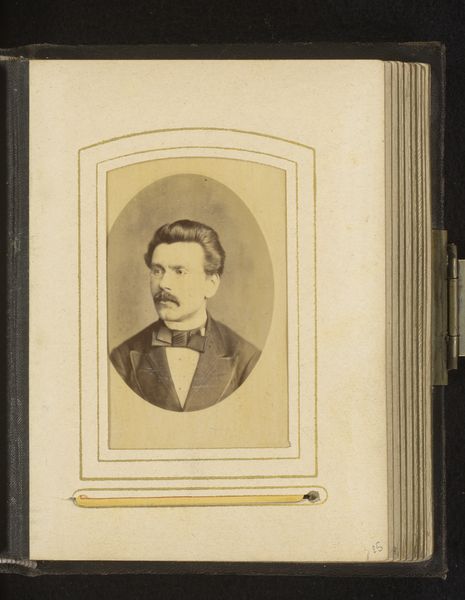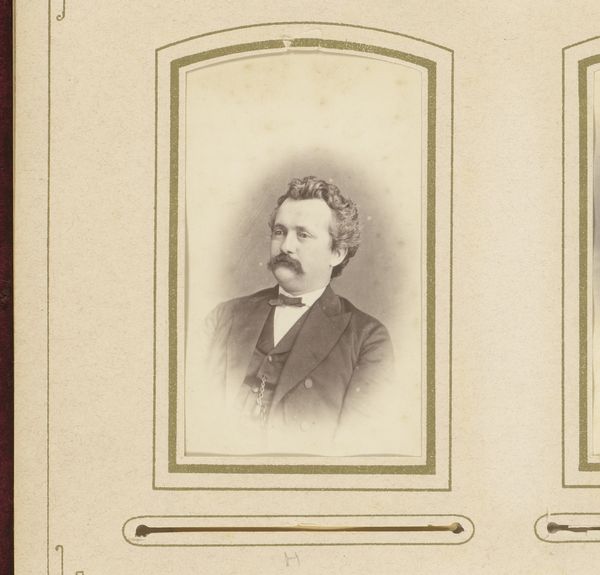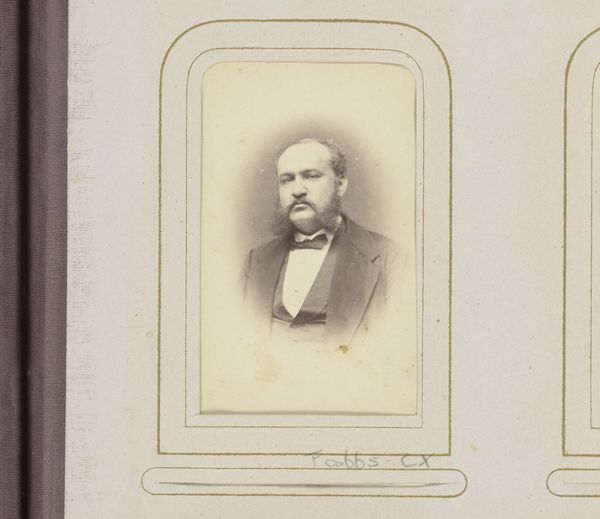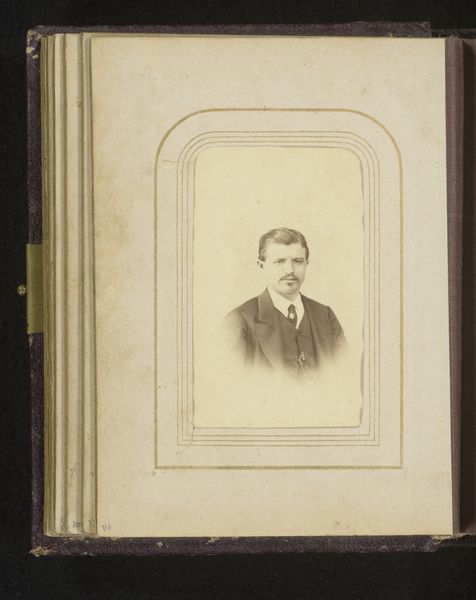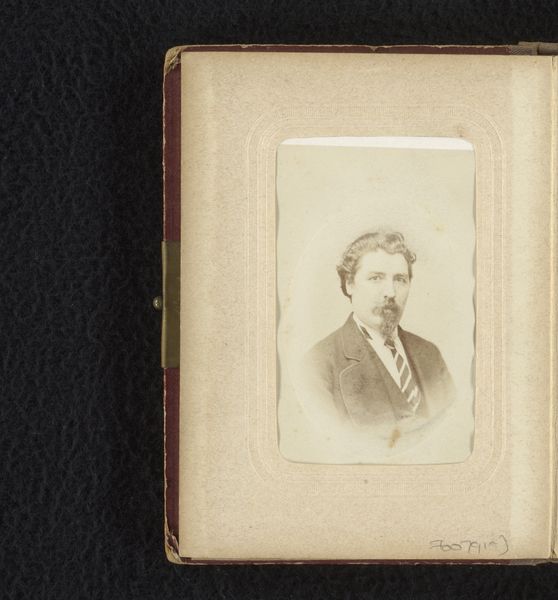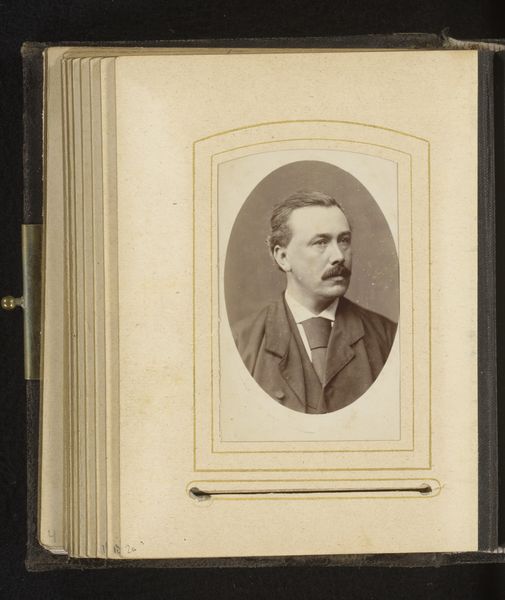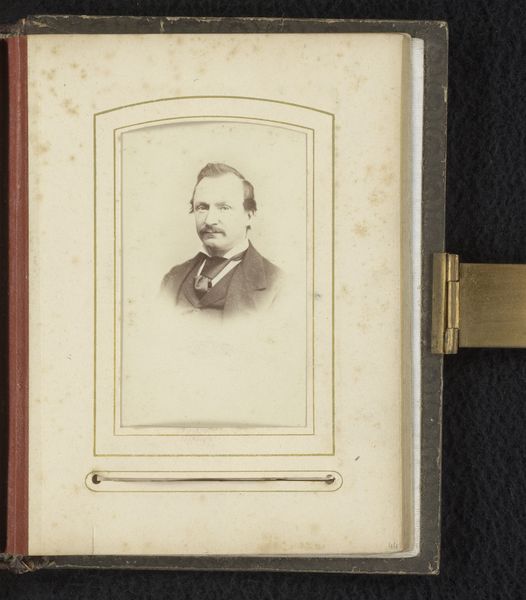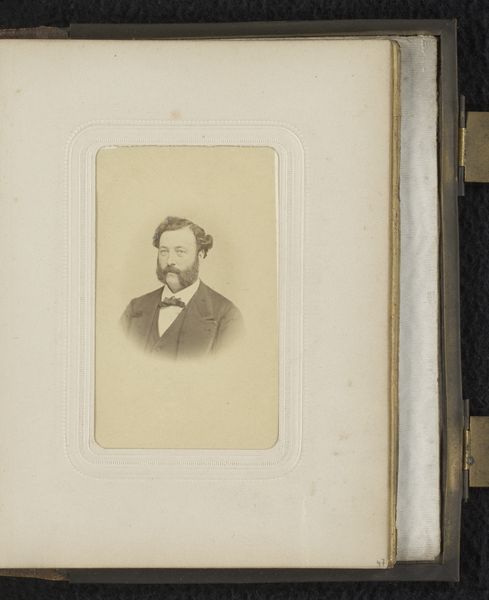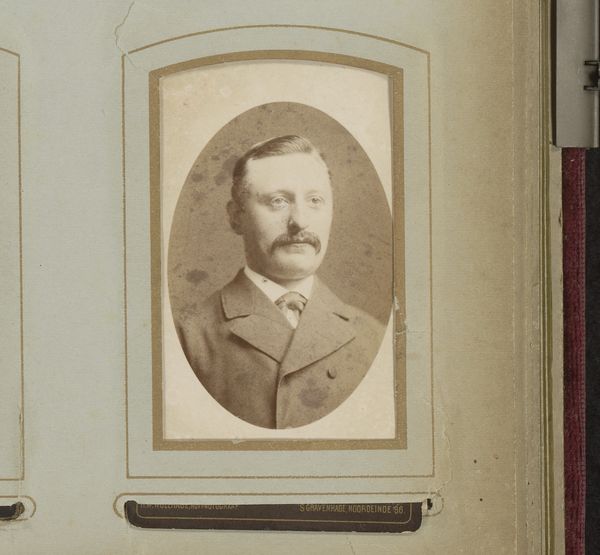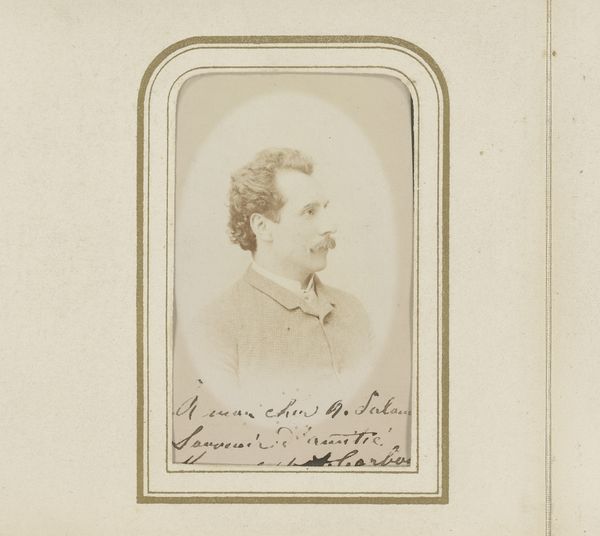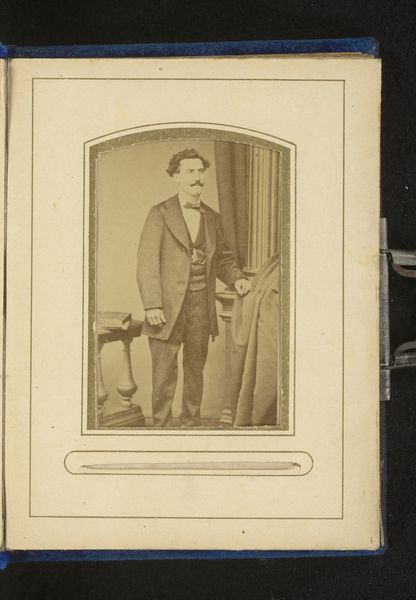
photography
#
portrait
#
photo of handprinted image
#
aged paper
#
toned paper
#
muted colour palette
#
photography
Dimensions: height 100 mm, width 62 mm
Copyright: Rijks Museum: Open Domain
Curator: Here we have a captivating photographic portrait titled "Portret van een man met snor", dating back to 1872, created by Wilhelm J. Grammann. Editor: There's an undeniable air of formality here. It almost feels staged, stiff, yet undeniably dignified given the era. Curator: The muted color palette, combined with what appears to be aged paper, truly encapsulates the spirit of late 19th-century portraiture. The way the gentleman's moustache is rendered becomes, almost, a symbolic flourish, echoing societal expectations around masculinity. Editor: Exactly, and it speaks to a particular social class, doesn't it? The tailored suit, the careful grooming, the whole performance shouts privilege. It also makes me consider accessibility; who was, and was not, able to participate in this type of portraiture. Curator: These studio portraits served a very particular cultural function. They were a way to preserve an image across generations, a claim to permanence and identity in a rapidly changing world. Editor: And the photograph’s aging speaks to the ways the technology both upholds and challenges those concepts of permanence over time. Think about what that meant, not only to those with financial resources but what this says about their social circles and place in a larger world order. It wasn't accessible for many, a silent barrier reinforced. Curator: Absolutely. Photography's rise did allow a burgeoning middle class to mimic the aristocratic tradition of painted portraiture, democratizing image representation to a degree. And while the tonal qualities contribute to its somber air, they simultaneously lend an air of timelessness. It bridges epochs. Editor: Still, we cannot detach this man's likeness, nor this artform, from a structure of inequality that dictated access and representation. Seeing it with contemporary eyes invites a re-evaluation of the unspoken social rules surrounding it. Curator: That's a critical perspective to acknowledge, offering a broader framework to understand how societal dynamics have shaped representation and the legacy that comes along with these works. Editor: Indeed, I came in viewing a straightforward piece from history, and leaving now with something a little more thought provoking.
Comments
No comments
Be the first to comment and join the conversation on the ultimate creative platform.

